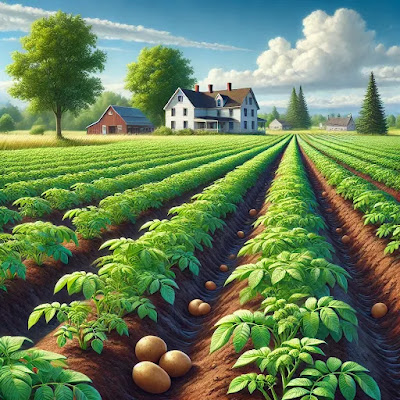Mastering Onion Farming: Your Comprehensive Guide
 |
| An Onion Bulb With Shoots (Source: Unsplash) |
Are you eager to cultivate onions successfully? Look no further. In this comprehensive guide, we provide you with the ultimate tips and knowledge to excel in onion farming. Whether you're an experienced farmer or just starting, our guide will empower you to achieve a bountiful onion harvest.
Choosing the Right Onion Variety
Selecting the appropriate onion variety is the first crucial step in ensuring a successful onion harvest. Royal Seed offers a diverse range of high-quality onion seeds tailored for different climates and soil types.
When choosing the right onion variety, consider the following factors:
Local Climate Conditions
Onions thrive in specific climate conditions. Choose a variety that matches the weather patterns of your region.
For example, short-day onions are ideal for Southern regions with milder winters, while long-day onions are better suited for Northern regions with longer daylight hours.
Soil Type
Your soil's composition is pivotal. Onions prefer well-drained, fertile soil with a pH range of 6.0-7.0. Conduct a soil test to ensure your soil meets these conditions.
Farming Goals
Consider your specific farming goals. Are you cultivating onions for personal consumption or commercial purposes? Different varieties may be more suitable for different objectives.
Preparing the Soil
Onions are particular about their soil requirements. To set the stage for a thriving crop, follow these steps:
Soil Testing
Conduct a soil test to determine its pH level and nutrient content. This will help you make informed decisions about soil amendments.
pH Adjustment
If your soil's pH falls outside the 6.0-7.0 range, consider adjusting it using lime (for acidic soil) or sulfur (for alkaline soil).
Organic Matter
Enhance soil fertility by incorporating organic matter such as compost or well-rotted manure. This not only improves soil structure but also provides essential nutrients for onion growth.
Planting Onions
Planting onions correctly sets the foundation for a successful crop. Here's what you need to know:
Planting Depth
Onion seeds or sets should be planted at the right depth, which is typically around 1 inch deep. Planting too shallow or too deep can affect bulb development.
Spacing
Proper spacing between rows and individual plants is crucial. Adequate spacing allows for optimal growth and airflow, reducing the risk of diseases.
Timing
Timing is everything. Plant onions as soon as the soil is workable in the spring. Early planting gives your crop a head start on growth.
Irrigation and Watering
Consistent moisture levels are vital for onion growth. However, it's essential not to overwater, as onions are susceptible to rot in waterlogged soil.
Consider the following irrigation tips
Drip Irrigation
Installing a drip irrigation system is an efficient way to provide consistent moisture without saturating the soil. It also reduces the risk of fungal diseases.
Watering Schedule
Water deeply and consistently, providing about 1 to 1.5 inches of water per week. Adjust watering based on weather conditions to prevent overhydration.
Fertilization and Nutrition
Onions demand specific nutrients to thrive. Proper fertilization is key to ensuring healthy growth:
Balanced Fertilizers
Apply balanced fertilizers with adequate nitrogen (N), phosphorus (P), and potassium (K). Nitrogen is particularly crucial for leafy growth.
Monitor Nutrient Levels
Regularly assess your onion plants' nutrient status through leaf analysis or soil testing. Adjust fertilization as needed to prevent deficiencies or excesses.
Pest and Disease Management
Protecting your onion crop from pests and diseases is essential for a successful harvest:
Common Pests
Watch out for common onion pests such as onion flies and thrips. Implement preventive measures, including the use of row covers and introducing natural predators.
Disease Prevention
Maintain good airflow between plants to reduce humidity and minimize the risk of fungal diseases. Fungicides may be necessary in high-risk areas.
Harvesting and Storage
Knowing when and how to harvest onions is crucial:
Harvest Timing
Harvest onions when the tops have fallen over, and the bulbs are fully mature. Lift them gently from the soil to avoid damage.
Curing
Cure harvested onions in a well-ventilated area for several weeks to toughen the outer layers and enhance storage life.
Storage
Store cured onions in a cool, dry place with good air circulation. Mesh bags or crates work well for this purpose.
Conclusion
Successful onion farming requires meticulous planning, proper soil preparation, and unwavering attention to detail throughout the growing season.
By following the guidelines outlined in this comprehensive guide, you can significantly increase your chances of a successful onion harvest.
Remember that Royal Seed offers top-quality onion seeds and expert advice to support your onion farming journey. Best of luck with your onion cultivation, and may your harvest be abundant!
This comprehensive guide is your key to mastering onion farming, ensuring that you can successfully cultivate this versatile and essential vegetable.

.png)

Comments
Post a Comment